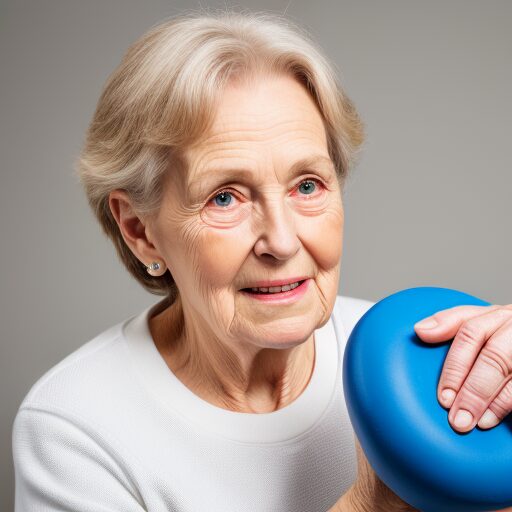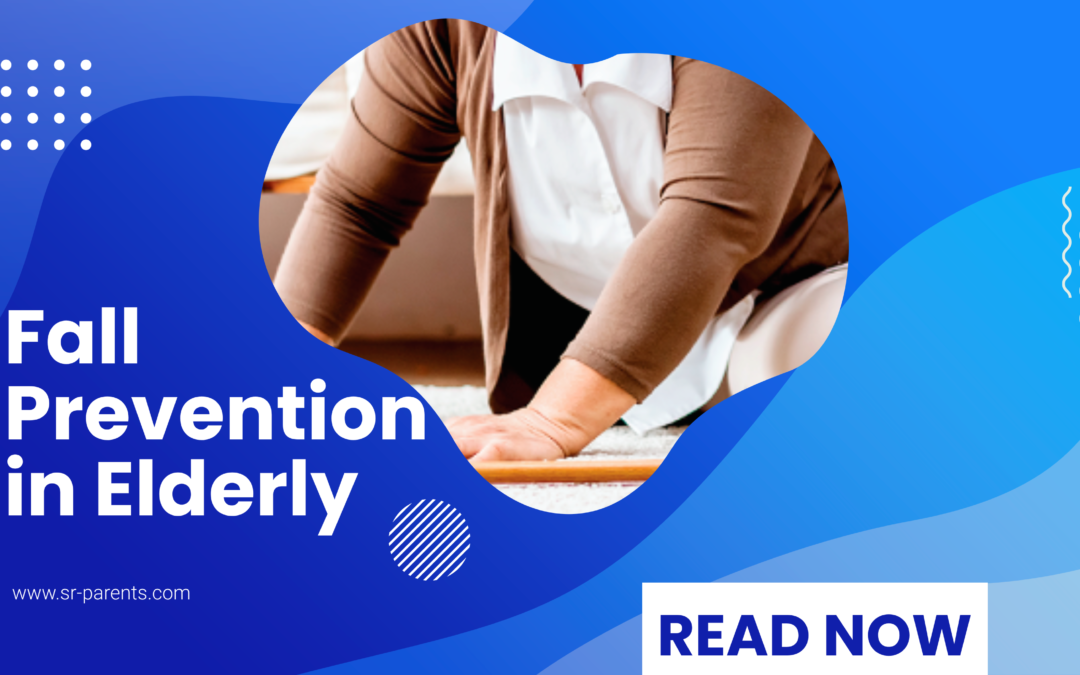Did you know that falls are not only common but also pose serious risks to our health as we age, especially when an elderly parent keeps falling? As we get older, our bodies change, and so does our risk of falling. It’s not just about a slip or a trip; it’s also about protecting our health and independence, considering fall risk factors. In this article, we’ll talk about fall prevention in the elderly, addressing the challenges faced by those with elderly parents experiencing recurrent falls.
We’ll explore why it’s vital for older adults to be aware of the risks and what steps can be taken to minimize them. Whether you’re an older adult yourself or have a loved one in this age group, understanding fall prevention is important.
Stay with me as we navigate through practical tips, expert advice, and simple strategies to prevent falls. Together, we can take steps to ensure that our golden years are both safe and enjoyable. Let’s get started!
Contents
The Risks of Falls in Older Adults

Common Risk Factors for Falls
Let’s talk about what makes falls more likely among older adults. It’s not just about a slippery floor or a loose rug. Several factors contribute to the increased risk of falling as we age.
Firstly, our physical condition plays a big part. Decreases in muscle strength, balance problems, and slower reflexes can all make falls more likely. Also, certain medications or health problems can affect our steadiness and vision.
Secondly, our living environment matters too. Hazards like loose rugs, cluttered pathways, and poor lighting are often overlooked. But they significantly increase the risk of falls. Even wearing the wrong type of footwear, like high heels or stocking feet, can be risky.
It’s important to identify these risk factors in our lives or the lives of our loved ones. Recognizing them is the first step in fall prevention.
Health and Injury Risks Associated with Falls
Now, why should we worry about falls? Because the consequences can be severe, especially for older adults. Falls are among the leading causes of serious injury and emergency room visits in this age group.
A fall can lead to injuries like broken bones, which can significantly impact one’s independence and quality of life. The fear of falling again can also lead to reduced physical activity. This ironically increases the risk of future falls.
Injuries from falls can range from minor bruises to more serious injuries like hip fractures and head traumas. These injuries can be life-changing, leading to a loss of mobility and, in some cases, long-term care needs.
Understanding these risks highlights the importance of fall prevention strategies. By addressing both the risk factors and the potential consequences, we can take informed steps to protect our health and well-being as we age.
Video By: @News4JAX
Role of Healthcare Professionals
in Fall Prevention
Healthcare professionals are key in preventing falls among older adults. Let’s look at how they can help.

Consulting Doctors for Personalized Advice
Your doctor is your primary advisor on fall prevention. They assess your fall risk based on health and medications. They can also refer you to specialists for further support.
Physical Therapist
A physical therapist is crucial for improving balance and muscle strength. They craft exercise programs tailored to your needs, reducing your risk of falling.
Occupational Therapist
Occupational therapists focus on your living environment. They suggest home modifications and assistive devices to make daily life safer and prevent falls.
Each healthcare professional plays a unique role in fall prevention. They offer expert advice and practical solutions to help older adults stay safe. Consulting with these professionals is a proactive step toward effective fall prevention.
Key Fall Prevention Strategies
for Older Adults
Effective fall prevention involves several strategies. Let’s explore key actions older adults can take to minimize their risk of falling.

Physical Activity and Balance
Regular physical activity is vital in fall prevention. Exercises that improve balance and muscle strength are especially beneficial. Activities like walking, tai chi, and gentle stretching can make a big difference. Engaging in a regular exercise program helps maintain mobility and reduces the risk of falls.
Home Modifications for Safety
Making your home safer is a crucial strategy. Start by removing trip hazards like loose rugs and clutter. Ensure good lighting, especially in hallways and near stairs. Installing grab bars in bathrooms and ensuring floors are slip-resistant can prevent many home falls. Small changes can greatly reduce the risk of falling at home.
Managing Health for Fall Prevention
Health management is key to preventing falls. Regular check-ups with your doctor are important. They can monitor health conditions that increase fall risk, like blood pressure issues. Getting your vision checked regularly also helps in avoiding falls. Proper management of your health plays a significant role in fall prevention.
These strategies are essential for reducing the risk of falls in older adults. You can significantly lower your chances of falling by staying active, making your home safer, and managing your health. These steps protect you from falls and support your overall health and independence.
Lifestyle and Behavioral Changes to Prevent Falls
Adopting certain lifestyle and behavioral changes can reduce the risk of falls in older adults. Let’s explore some simple yet effective practices and how family members can play a supportive role.

Simple Daily Practices for Fall Prevention
Incorporating some basic daily habits can make a big difference. Start by taking several deep breaths before standing up to avoid dizziness. Choose the right footwear. Sturdy shoes with non-slip soles are best. Also, take your time when moving, especially when climbing stairs or walking on uneven surfaces. Slowly rising from a chair and slowly sitting down can prevent sudden balance loss. These small practices can greatly reduce your risk of falling.
The Supportive Role of Family and Caregivers
Family members and caregivers are crucial in fall prevention for older adults. They can help by ensuring the home environment is safe and free of hazards. This includes checking for loose rugs, making sure light switches are easily accessible, and installing grab bars in key areas. They can also encourage physical activity and accompany older adults to health appointments. Emotional support is also key. It boosts confidence and reduces the fear of falling.
These measures protect from falls and contribute to a higher quality of life. Small changes can lead to big improvements in safety and independence.
Medication Management and Fall Prevention
Managing medications is a key aspect of fall prevention for older adults. Let’s dive into how proper medication management can reduce the risk of falls.

Reviewing Medications with Your Doctor
Medications can sometimes increase your risk of falling. This could be due to side effects like dizziness or unsteadiness. It’s important to have regular check-ups with your doctor. During these visits, review all your medications, including over-the-counter ones. Your doctor can adjust dosages or change medications to lower your fall risk.
Understanding Medication Side Effects
Be aware of how your medications affect you. Some can cause drowsiness or affect your balance. If you notice such effects, talk to your doctor immediately. They might suggest taking medications at times when you’re less active, reducing the risk of falling.
Staying Organized
Keeping your medications organized can help prevent falls. Use pill organizers or set reminders to take your medications correctly. This helps avoid the confusion that can lead to overmedication or missing doses, both of which can increase your risk of falling.
Proper medication management is a crucial step in preventing falls in older adults. You can significantly reduce your fall risk by working closely with your doctor and being mindful of how medications affect you. Staying informed and organized with your medications is a proactive way to maintain your health and safety.
Addressing The Fear of Falling
The fear of falling is a common and understandable concern among older adults. Let’s talk about how to manage this fear effectively.

Recognizing the Impact of Fear
Fear of falling can significantly affect your quality of life. It might lead you to avoid activities, reducing your physical activity. This can ironically increase the risk of falls. Acknowledging this fear is the first step in addressing it.
Talking About Your Fears
Don’t hesitate to discuss your fears with your doctor or a family member. They can provide support and help you find ways to manage your fear. Sometimes, just talking about it can reduce its power over you.

Gradual Exposure to Activities
Start slowly getting back into activities you’ve been avoiding. Take small steps to rebuild your confidence. This could mean walking short distances at first, then gradually increasing as you feel more comfortable.
Seeking Professional Help if Needed
If fear of falling is significantly impacting your life, consider professional help. A therapist can offer strategies to cope with and overcome these fears. They can also work with you on exercises to improve balance and strength.
Addressing the fear of falling is crucial for maintaining independence and quality of life. By acknowledging and talking about your fears and seeking help when needed, you can regain confidence and reduce the risk of falls. It’s okay to be afraid, but don’t let fear stop you from living your life to the fullest.
Emergency Planning and Response for Falls
Being prepared for an emergency is an important part of fall prevention. Let’s explore what to do in case of a fall and how to plan for it.

Creating an Emergency Plan
Having a plan in place can provide peace of mind. Make sure your home has easy access to phones or emergency alert systems. Keep emergency numbers, like those of family members and your doctor, in an easily accessible place.
Using Medical Alert Devices
Consider using a medical alert device, especially if you live alone. These devices can be worn as a necklace or bracelet and allow you to call for help at the press of a button. They are particularly useful when you are unable to reach a phone.
Educating Yourself and Others on First Aid
Learning basic first aid can be helpful. Knowing how to treat minor injuries or what to do until help arrives can make a big difference. Also, educate family members or caregivers on these basics so they can assist effectively in an emergency.
Keeping Calm and Assessing the Situation
If you fall, try to stay calm. Assess yourself for injuries before trying to get up. If you’re hurt or unable to rise safely, call for help using your phone or medical alert device.
Having an emergency plan and knowing how to respond can significantly reduce a fall’s stress and potential harm. Being prepared is a key part of fall prevention and ensures that you get help quickly if needed.
Resources and Support for Fall Prevention
Finding the right resources and support is key to preventing falls among older adults. Let’s look at where you can find helpful information and assistance.

Leveraging Professional Resources
Organizations like the Centers for Disease Control and Prevention offer valuable insights into fall prevention. Their guidelines and tips are based on extensive research and expert advice. The National Center for Injury Prevention provides resources on how to make living spaces safer and prevent future falls.
Community Programs and Workshops
Many communities offer programs specifically designed for older adults to prevent falls. These might include tai chi classes, which are excellent for improving balance and coordination. Look for workshops on fall prevention strategies or exercise programs focused on older adults. Participating in these programs can also be a great way to connect with others who share similar goals.
Wrapping It Up

Remember, falls aren’t an inevitable part of aging, and there are many steps you can take to reduce your risk.
Fall prevention starts with understanding the risks and taking proactive steps. Engage with healthcare professionals. Adopt daily practices for safety. And make your living environment as fall-proof as possible. Managing medications, addressing the fear of falling, and having an emergency plan are also crucial.
Most importantly, stay active and connected. Regular physical activity and maintaining a supportive network of family, friends, and healthcare providers are invaluable. These not only prevent falls but also enhance your overall quality of life.
Finally, remember that fall prevention is an ongoing process. Consult with your doctor regularly. Stay informed about new strategies. And adapt your environment as needed. They are part of a long-term commitment to your health and well-being.
Thank you for reading our article about fall prevention. By taking these steps and staying vigilant, you can enjoy your golden years with confidence and independence. Here’s to a healthier, safer future!
FAQs
What are the most common causes of falls in older adults?
The most common causes include balance issues, muscle weakness, and home hazards like loose rugs or poor lighting. Medications affecting steadiness or vision can also be factors.
How can older adults improve their balance to prevent falls?
Engaging in physical activities like tai chi, walking, or balance exercises can significantly improve balance. Regular physical therapy sessions can also be beneficial.
What role do family members play in fall prevention?
Family members can help by ensuring the home is safe from fall hazards, encouraging regular health check-ups, and supporting the older adult in maintaining an active lifestyle. Their emotional support is also key in reducing the fear of falling.
Learn More About Senior Care!
Learn about the best types of walkers for elderly parents and much more with us. We provide essential tips and tricks for taking care of your senior loved ones. Follow us on social media to stay updated with practical advice and supportive information.
Facebook: https://www.facebook.com/sr.parents
Instagram: https://www.instagram.com/seniorparents/
Twitter: https://twitter.com/senior_parents
For more on senior care, visit our site: SRParents.com. Empower yourself with the knowledge to provide the best care for your elderly parents!





